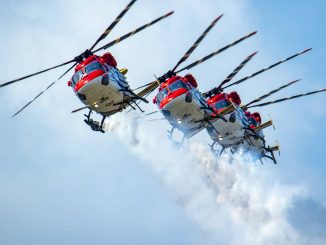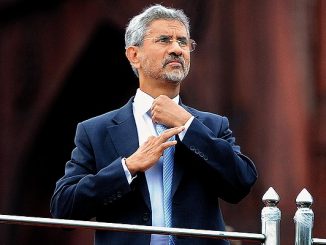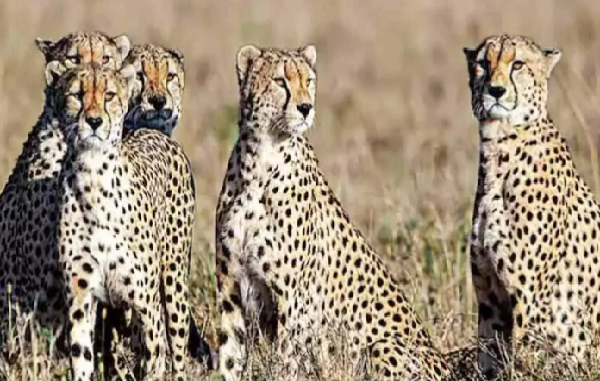
Apr 20: Prime Minister Shri Narendra Modi in his Mann Ki Baat on 25th September 2022 urged the citizens to come up with suggestions for cheetahs reintroduced from Namibia and South Africa, with an intention to popularize and sensitize the general public about Project Cheetah. In this regard, a competition was organized on the Government of India platform mygov.in from 26th September to 31st October 2022. In response, a total of 11,565 entries were received suggesting new names for reintroduced cheetahs. The entries were scrutinized by a selection committee and based on the significance and relevance of the suggested names for their conservation and cultural value the following new names have been selected for cheetahs for Namibian and South African cheetahs.
The Ministry of Environment, Forest and Climate Change congratulates the winners of the competition who suggested new names for Namibian and South African cheetahs.
1) Namibian cheetahs
| Sl No | Old Name of Cheetah | Sex | Photo of Cheetah | New Name | Suggested by |
| 1 | Asha | Female | 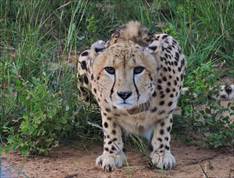 | Aasha | Rojali Sethy, Avinash Gajanan Rao Gedam, Omprakash SinghSatish ReddyM S KumarswamyShamoksheet |
| 2 | Oban | Male | 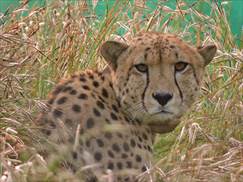 | Pavan | Aashvisingh, Sharweshwar Haritash, Kaarthi Shastry B S, Aranya Haldar, Amankumar |
| 3 | Savannah | Female | 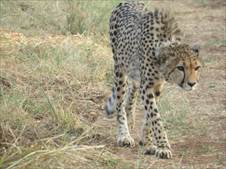 | Nabha | Amit Rajendra Nalawade,Narendra Choudhary, Sunil Patil |
| 4 | Siyaya | Female | 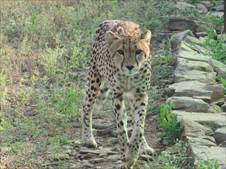 | Jwala | Dwarkaram,Ishant Jindal,Bhaiya Ji |
| 5 | Elton(left animal) | Male | 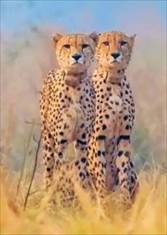 | Gaurav | Satish Reddy, Jayant Kothavade, Bhumika Bisht, Suchismita Sengupta |
| 6 | Freddy(right animal) | Male | 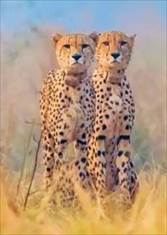 | Shaurya | Anuj Kumar Yogi, Bhumika Bisht |
| 7 | Tiblisi | Female | 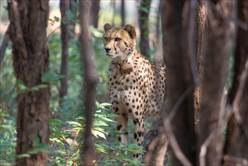 | Dhatri | Rushav SatapathyVarshini Bhat |
2) South African cheetahs
| Sl No | Old Name of Cheetah | Sex | Photo of Cheetah | New Name | Suggested by |
| 1 | Phinda Adult Female | Female | 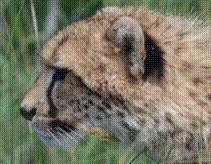 | Daksha | DevanandaTinu |
| 2 | Mapesu sub-adult female | Female | 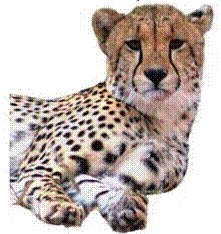 | Nirva | Saamragyee Agarwal |
| 3 | Phinda Adult Male1 | Male | 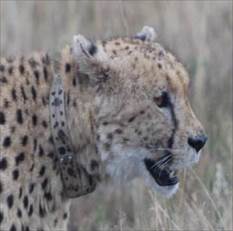 | Vayu | Sumit Amit Jagtap, Edrisha Raj, Raj Sakhare, Ashish Sharma, Shivani Thakur, Satish Kumar, Ajinkyak, Akshay Sharma |
| 4 | Phinda Adult Male2 | Male | 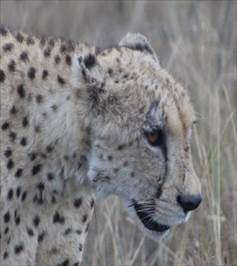 | Agni | Satish kumarBhaiya jiAswathy sureshShivraj SwamiM S KumarswamyAbhisheklatawaKaarthikShastryBSBinduDaniAkshay SharmaNidhi Sharma |
| 5 | Tswalu Adult Female | Female | 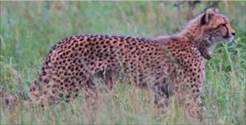 | Gamini | Kanchan Gupta |
| 6 | Tswalu Adult Male | Male | 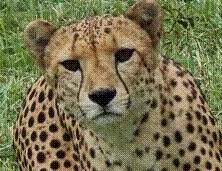 | Tejas | Ivan Leon Joseph, Varsha,Manglam lal srivastavShubhamsinghRohit Dubey, Bhaiya ji, Abhisheklatawa,Om Prakash Singh |
| 7 | Tswalu Sub Adult Female | Female | 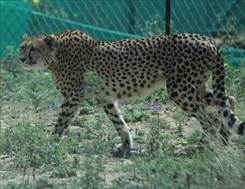 | Veera | Onora Mukherjee |
| 8 | Tswalu Sub Adult Male | Male | 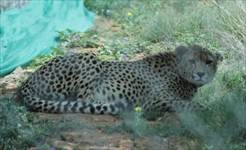 | Suraj | Shiva Nandan Mishra |
| 9 | Waterberg biosphere adult female | Female | 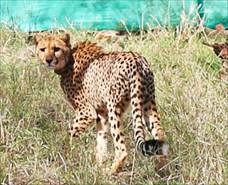 | Dheera | Sonu, Devanand |
| 10 | Waterberg biosphere adult male | Male | 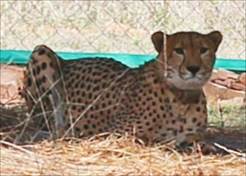 | Uday | Bipradip GhosalSuchismita Sengupta |
| 11 | Waterberg biosphere adult male2 | Male | 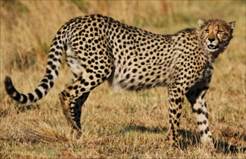 | Prabhas | Akshay Sharma |
| 12 | Waterberg biosphere adult male3 | Male | 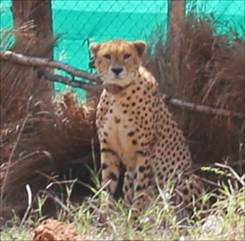 | Pavak | Priya Sonawane |
The last cheetahs in the Indian wilderness were recorded in 1947 when three cheetahs were shot in the Sal (Shorea robusta) forests of Koriya District, Chhattisgarh State. The main reasons for the decline of cheetahs in India were large-scale capture of animals from the wild for coursing, bounty and sport hunting, extensive habitat conversion with a consequent decline in prey base and in 1952 Cheetahs were declared extinct.
The goal of the Cheetah Introduction project in India was to establish viable cheetah metapopulation in India that allows the cheetah to perform its functional role as a top predator and provide space for the expansion of the cheetah within its historic range thereby contributing to its global conservation efforts.
The major objectives of the introduction project were:
1) To establish breeding cheetah populations in safe habitats across its historic range and manage them as a metapopulation,
2) To use the cheetah as a charismatic flagship and umbrella species to garner resources for restoring open forest and savanna systems that will benefit biodiversity and ecosystem services from these ecosystems,
3) To use the ensuing opportunity for eco-development and eco-tourism to enhance local community livelihoods and
4) To manage any conflict by cheetahs or other wildlife with local communities within cheetah conservation areas expediently through compensation, awareness, and management action.
In this context, the Government of India initiated G2G consultative meetings with the Republic of Namibia which culminated in the signing of the MoU between the two countries on 20th July 2022 for cheetah conservation. Following the signing of the MoU, in a historic first wild-to-wild intercontinental translocation, eight cheetahs were transported from Namibia to India on 17th September 2022 and were released into the quarantine bomas by the Prime Minister of India.
As per the Action Plan for Cheetah Introduction in India, annually 10-12 cheetahs are required to be imported from African countries for the next 5 years at least. In this context, the Government of India initiated bilateral negotiations with the Republic of South Africa in 2021 for cooperation in the field of Cheetah conservation. The negotiations were successfully concluded with the signing of an MoU with the Republic of South Africa in January 2023.
Under the provisions of the MoU, a first batch of 12 cheetahs (7 males, 5 females) were translocated from South Africa to India on 18th February 2023. The translocation of 12 cheetahs from South Africa to Gwalior and onwards to Kuno National Park through Helicopters was executed by the Indian Air Force. A delegation of cheetah experts, veterinarians and senior officials accompanied the cheetahs during the transcontinental translocation exercise.
For taking India’s ambitious project on Cheetah Introduction forward, a consultative workshop involving international cheetah experts, scientists, veterinarians, and forest officials was also organised on 20th February 2023 at the Kuno National Park. The outcome of the workshop paved a way for better cheetah management which will help in successfully establishing cheetah metapopulation in India.
Post Translocation Updates About Cheetahs in India
- Post the mandatory quarantine period of the first batch of cheetahs, the animals were released into the larger enclosure in a phased manner.
- NOC from DAHD(Department of Animal Husbandry and Dairying) was obtained and the Cheetahs have been released in the larger enclosure. All Cheetahs are doing well and hunting the wild prey.
- Four Namibian Cheetahs are free ranging in the wild and are monitored 24*7.
- Furthermore, 4 cubs were born and are healthy and doing well.
- Overall 19 adults are doing well.

